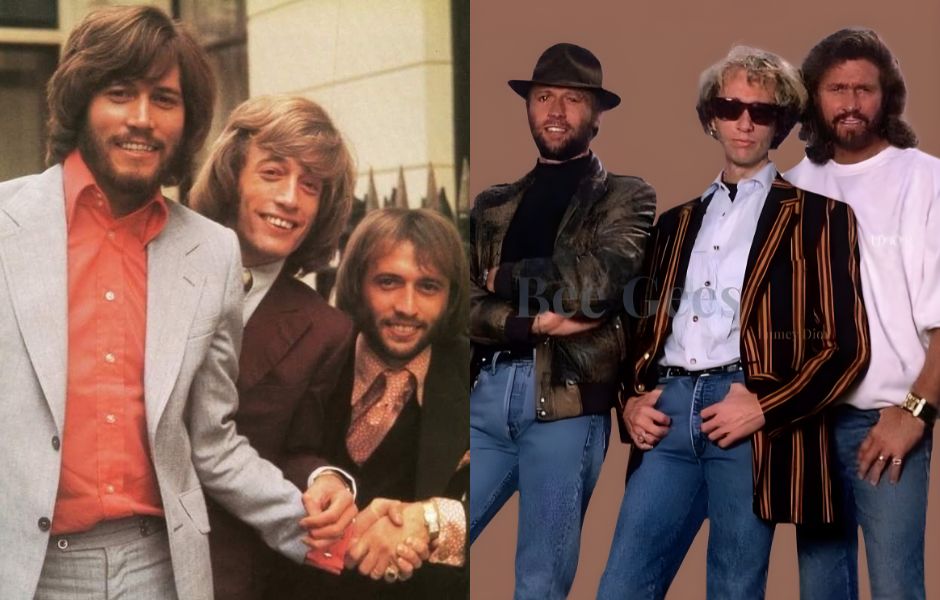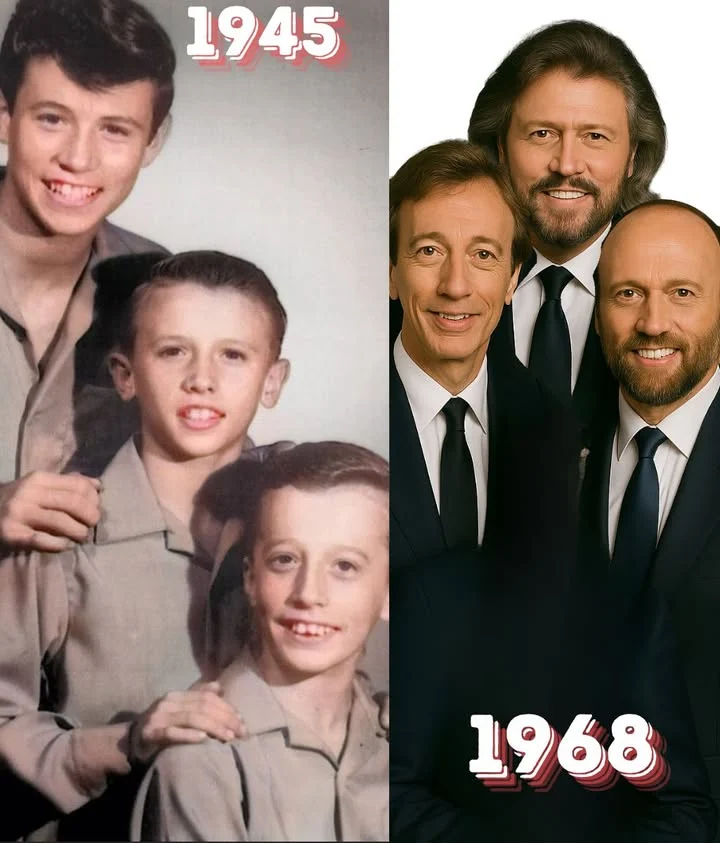
From Obscurity to Immortality The Bee Gees’ Unbelievable Transformation
In the smoke-filled clubs of 1960s London, three brothers whispered harmony into the haze—a fragile dream barely audible against the roar of the era. Barry, Robin, and Maurice Gibb started quietly, their voices weaving timeless melodies as they chased a spark that would make the world feel something real. What unfolded was not just a story of pop success, but a remarkable journey of resilience, reinvention, and brotherhood that would pulse through decades.
Whispered Dreams in the Shadows of London
Before the glitter and flashing lights, there was a haze of uncertainty. The Bee Gees were young, talented, and hopeful, but in a city saturated with sound and ambition, survival was not guaranteed. They sang in cramped clubs and cramped little studios, their harmonies already hinting at a magic others failed to grasp. Their early songs—a heart-wrenching “New York Mining Disaster 1941,” the soulful yearning of “To Love Somebody,” and the wistful melancholy in “Massachusetts”—were not just compositions. They were emotional maps etched with longing and vulnerability.
Yet the path was anything but smooth. Creative tensions and shifting musical trends threatened to fracture the brothers. Barry Gibb later reflected in a rare interview, “We were just trying to find our place. Sometimes it felt like the world was moving too fast, and we hadn’t quite caught up.” They weren’t merely chasing fame—they were pursuing an authentic connection through song. This quiet determination planted the seeds for something far greater.
A Voice That Changed Everything
The landscape of music evolved dramatically when the ’70s arrived—rock matured, soul soared, and beneath it all, the pulse of disco began beating stronger. It was right in this crucible of change that Barry Gibb uncovered a new instrument in his own voice—a soaring falsetto that would not just redefine the group’s sound but the entire decade. What emerged was not a mere stylistic experiment but a resurrection.
That falsetto became a beacon that led the brothers from teenage dreamers to architects of an era. The “Main Course” album marked the dawn of this transformation. Then came “Children of the World” and the cultural earthquake of “Saturday Night Fever,” a soundtrack that captured the frenzied whirl of disco dance floors worldwide. Songs like “Stayin’ Alive,” “Night Fever,” and “How Deep Is Your Love” transcended their roles as pop singles. They became anthems of a generation hungry for movement, hope, and release.
Music journalist Linda Hayes once witnessed their live debut during this period. “You could feel the electricity in the crowd—the way the Gibb brothers commanded the room. They didn’t just perform songs; they created a pulse you couldn’t ignore.” Their rise wasn’t accidental; it was the sound of brothers in perfect sync, discovering a new language of emotion and energy through music.
Brotherhood Beyond the Spotlight
Despite their soaring success, the Bee Gees never lost the essence that defined them: a deep familial bond and a shared belief that music was a lifeline connecting hearts. The meteoric rise did not erode their values or the intimacy of their collaboration. Instead, it reinforced it.
Barry, Robin, and Maurice understood that their voices were parts of a whole, each harmony a thread in an unbreakable tapestry. Even as disco’s glittery reign faded and critics moved on, the brothers clung to what really mattered. “We made music to connect, not just to climb charts,” Barry explained. “That’s why, even now, when I sing a note, I hear my brothers with me—because we’re still together in every harmony.”
Their story is not just a nostalgic trip through a disco era long past but a portrait of relentless faith in their gift—and each other.
From Fading Echoes to Everlasting Songs
As the decades have rolled on, the Bee Gees’ music has taken on the quality of a heartbeat—steady, comforting, timeless. The flicker of disco nostalgia has sparked countless revivals, but the brothers’ legacy endures because they captured something far more profound than a trend. They captured the pulse of human emotion itself—heartache, joy, vulnerability, and strength.
Barry remains the living embodiment of this enduring spirit. When he performs their songs today, the echoes of Robin’s smooth tone and Maurice’s rich harmonies linger like ghosts woven into every note. Together, they built more than a musical empire—they crafted a legacy that reshaped how we understand harmony, resilience, and the power of brotherhood.
The tale of the Bee Gees is more than a chronicle of fame or fleeting moments in pop history. It is a testament to transformation—from whispered dreams in smoky rooms to commanding stages illuminated by disco lights. It is proof that greatness is not just about shining bright but about enduring long after the spotlight has moved on.
And so, as the music plays on, their voices linger—not fading away but rising, like the wings of legends who, in the end, don’t just survive—they fly.
